Happenings & Final Days in Okinawa
Okinawa Marathon 10k, Whale Watching, Karate Green Belt, & Graduation
Because I’ve written my past few newsletters based on theme rather than the happenings of the week, there’s a lot to catch up on about what I’ve been up to in Okinawa!
El Lequio
In February, I went to El Lequio, a bar in Naha, with my cousin Asato and his girlfriend Kumi. We started off the night at delicious izakaya in the Omoromachi neighborhood of Naha.1 It’s one of my favorite neighborhoods – it has really cool bars and restaurants. At the izakaya, we got an assortment of delicious food, as well as some Orion beer.
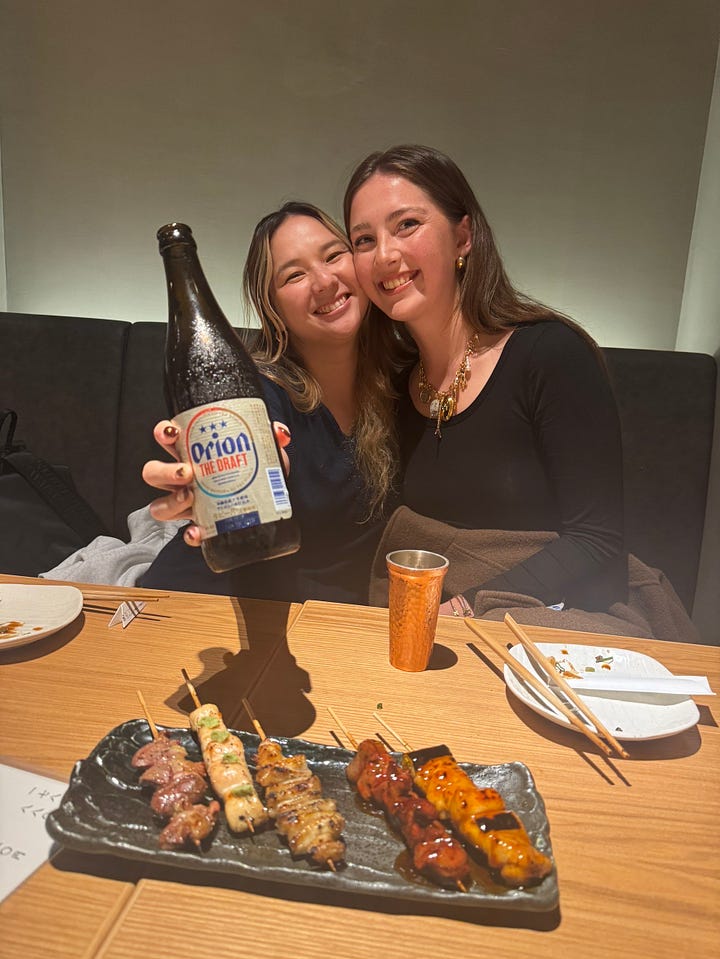
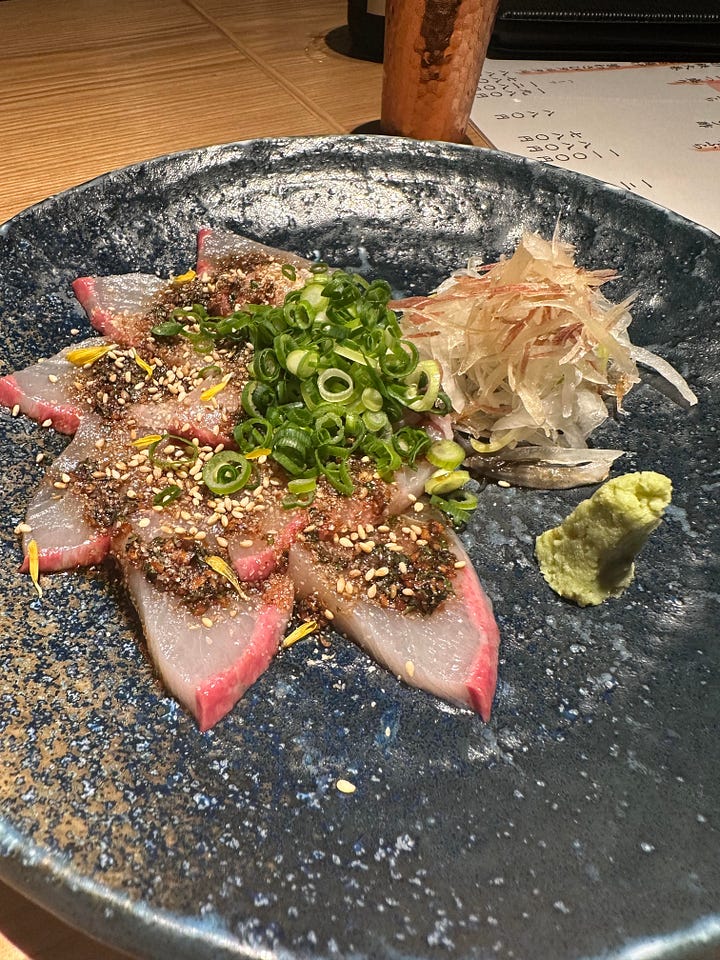
After dinner, we walked to El Lequio, a bar owned by the SG Group, which also owns The SG Club in Tokyo, which I went to with Rhea and Joao. El Lequio has drinks just as good at The SG Club, but without the wait – we waited 45 minutes to get into The SG Club, whereas at El Lequio you can just walk in. I also think the decor and vibe of El Lequio is even cooler than their Tokyo bar!
“El Lequio” is the Portuguese word for Ryukyu (or Liuqiu, in Chinese). The Portuguese traded with the Ryukyu Kingdom from the mid 1500s up until Satsuma’s invasion in 1609; fans of the show Shogun will be familiar with the Portuguese’s trade presence in East Asia during this time. Due to China’s trade restrictions, the Portuguese would occasionally use Ryukyu as a trading hub to access Chinese goods, as the kingdom was a tributary state of China.
The bar El Lequio takes its decor inspiration from South America, particularly Brazil (hence the Portuguese name); Brazil has the largest diasporic community of Okinawans in the world.
I loved how they blended Okinawan flavors with classic cocktails. I started with a shiquaasa cocktail (a kind of Okinawan citrus), and then I got a cocktail inspired by Okinawa Soba. They put ginger, a typical soba topping, on an absinthe spoon, and rimmed the glass with shichimi (typical seasoning for soba). It was really good!
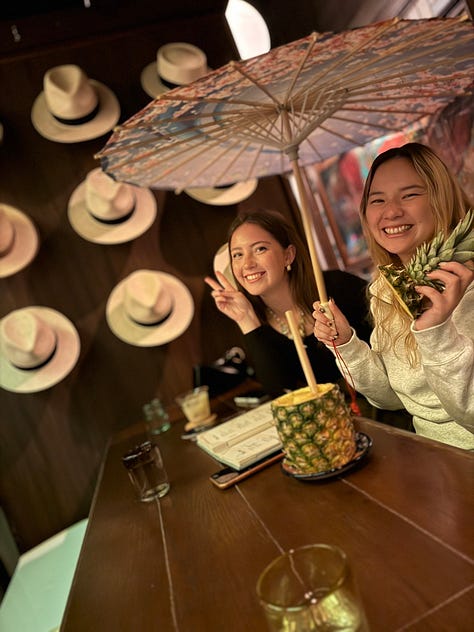
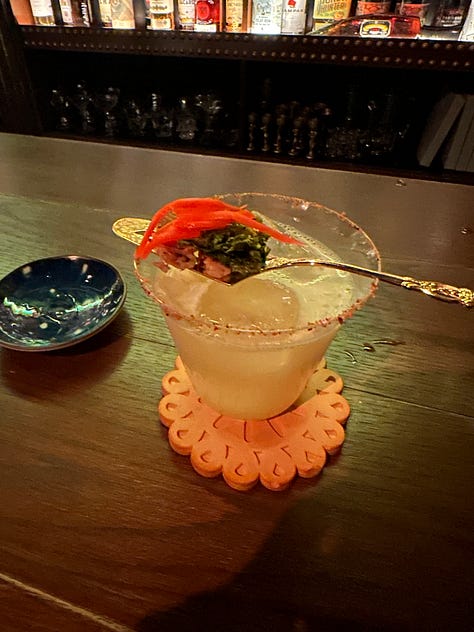
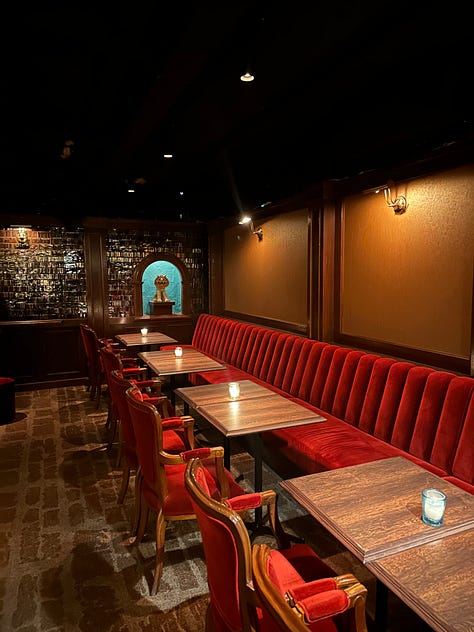
Okinawa Marathon 10k
The following Sunday, I ran the Okinawa Marathon 10k! The early morning was a little bit stressful figuring out parking and logistics – it was also raining – but by the start of the race it had cleared up.

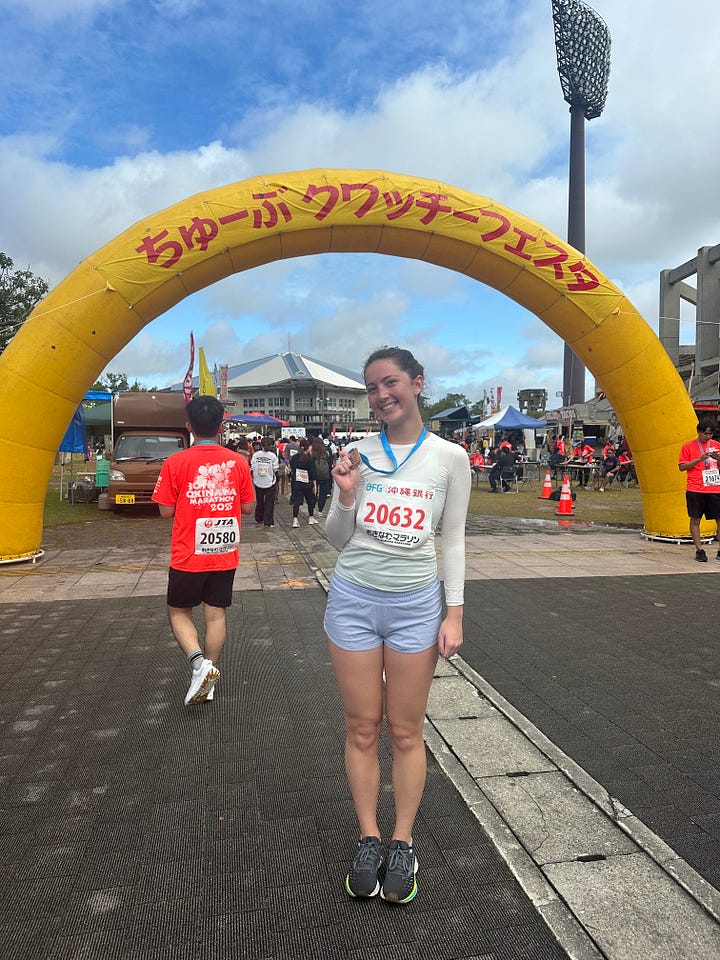
The race was not as difficult as I had feared; I was happy with my time, which was subsequently printed in the newspaper alongside the names and times of all the other runners. Before coming to Okinawa, I’d never run in my life; now I see it as a great way to spend time outside and listen to music (two of my favorite things anyways), with the added benefit of exercise.
I crossed the finish line with a woman from Pennsylvania; she just moved to Okinawa with her four children, since her husband is in the Marines. She told me that she’s been enjoying Okinawa so far, and that she’s getting back into running after a decade of having babies (her oldest is 12, and her youngest is 3).
Interestingly, though, she said her husband has to go back to the U.S. all the time for work – mostly to California and Rhode Island – so although his family were relocated to Okinawa because of his station change, much of his work isn’t actually in Okinawa.
I’ve also been using Strava, which is not only convenient for tracking my progress, but it has also been a nice way to keep in touch with my friends at home. I’m running the Brooklyn Half Marathon with both high school and college friends right when I get back from Japan, so it’s been fun to see their training too!
Zamami Whale Watching
The next weekend was a long weekend, and whales pass through Okinawa this time of year, so I took the opportunity to go on a whale watching tour off the coast of Okinawa. On Saturday, I took the ferry to Zamami Island, one of the Kerama Islands about an hour away from Naha.
When I got to the island on Saturday, I went for a run; I’ve found that it’s a nice way to lay the groundwork when I arrive in a new place. I did a 6 mile loop around the island, which had a lot more elevation than I was expecting, but I enjoyed the views from the top!
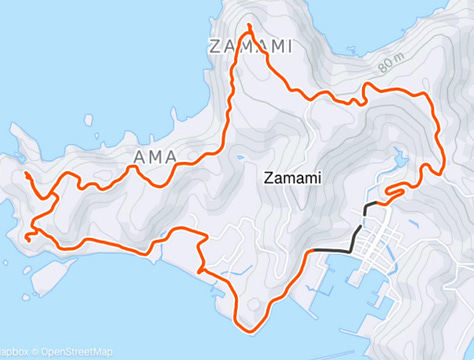

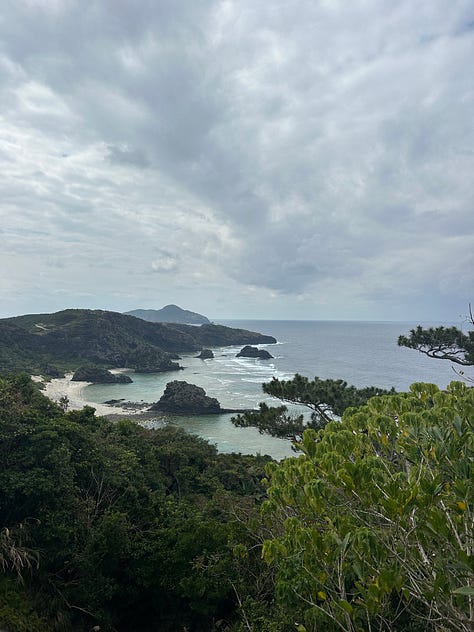
Along the way, there was a statue of a dog prominently displayed on the side of the road. The story goes that this dog Marilyn, and another dog, Shiro, used to live next to one another in Zamami and would always play together.
When Shiro’s owners moved to Aka Island in 1986, 2 miles across the bay from Zamami, they noticed that Shiro would go missing every morning. One day Shiro’s owner followed the dog to the beach, where he saw Shiro get in the water and start swimming. The owner grabbed his boat and followed Shiro for three hours across the water all the way to Zamami, where Marilyn was patiently waiting for him on the shore.
Every day, Shiro would swim across the water for hours just to see Marilyn. Their heartwarming story became famous in Japan, and in 1988, a movie was made about their love (and starred the real-life Shiro). A counterpart statue of Shiro stands on Aka Island, facing Marilyn’s across the water (his statue has a necklace of blue flowers).
After my run, it was much sunnier and warmer than I had expected, and my hotel had wetsuits that I could borrow for free. The Kerama Islands are known for some of the best snorkeling in the world, so I figured I should take the opportunity while I had it.
I was the only person on the entire beach (understandable, since it was a chilly day in February), but I saw lots of cool fish and I got used to the cold water relatively quickly.


After my snorkeling, I had an amazing meal at my hotel. I wasn’t expecting it to be so good – Zamami is a tiny island with a population of fewer than 900 people – but my dinner was a delicious tasting menu featuring upscale takes on Okinawan food.
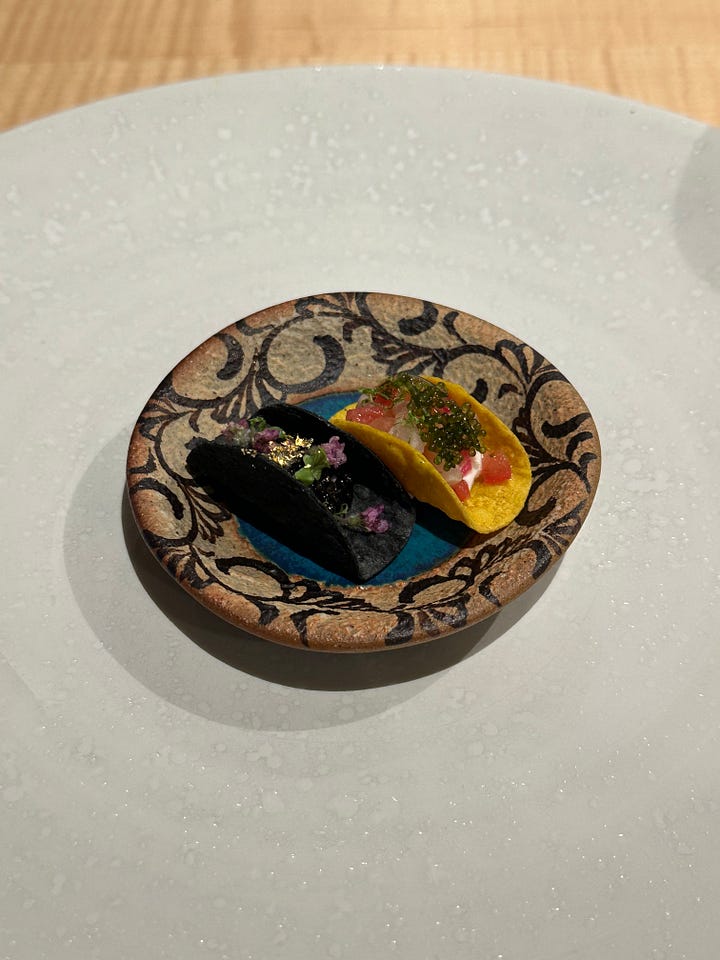

The next morning, I embarked on the whale watching tour! It was cold, slightly rainy, and windy, so we had to bundle up on the boat.
We were lucky enough to see two humpback whales – a mom and baby – on their migration north.
It was pretty incredible to see them breach and lift their tails out of the water.
There was another American woman on the whale watching boat with me – she said she’s doing a world tour for her 50th year, and various friends and family members are meeting her in different places along the way. It was cool to hear about all the adventures she has planned!
Yanbaru Forest
In March, Tomoharu and Tomoaki took me to the Yanbaru Forest to see the Yanbaru Kuina in real life (the bird that Tomoharu was the first to photograph). The drive from Naha is about 3 hours, so we started with coffee at Tomoharu’s house before heading north.
Once we got to Yanbaru, our first stop was a bridge over a lush green gorge. Tomoharu got out of the car with an iPod hooked up to a large speaker and played a recording of the Yanbaru Kuina’s call. After a moment, we could hear the bird in the woods call back.
It was magical to stand on the bridge, getting dusted by misty rain, hearing the birds call back as we looked out over the shinryoku (“new green”) foliage.
Then we headed to the site where Tomoharu and Tomoaki first photographed the Yanbaru Kuina in the 80s. After driving up a winding road through dense jungle forest, we eventually pulled off on the side to a small pathway. We skirted the fence and walked a short ways through the brush.
The Yanbaru Kuina likes to bathe, and Tomoharu explained that from this vantage point on the ridge, you used to be able see down to a small pond where the Yanbaru Kuina would splash around; however, the brush was overgrown and we couldn’t see any birds.
Even though we didn’t get to see the Yanbaru Kuina in the wild, we then drove to the Yanbaru Kuina conservation center, a small museum that has one in captivity. He was so cute – his name was Kuto :)
I was surprised how elegant the bird was, always preening and bathing. The museum had so many Yanbaru Kuina branded things and photographs. I said that Tomoharu must be so proud to see how much people love the bird that he discovered!
For our last stop, we went to Tomoharu’s friend’s house. His friend Shigetaka Touma is a potter, and he and his wife Yaeko live deep in the woods of the Yanbaru Forest.
When we pulled up to their driveway, there were two giant clay kilns in their garage. Shigetaka and Yaeko came out to greet us and led us down a path through the woods. I was so surprised to see a massive, beautiful A-frame home emerge from behind the trees.
It took them 3 years to build this house. They first saw the A-frame style in an American design catalog, and then ordered wood for the house in parts. Luckily, they had a lot of help from friends in assembling it.
Once we stepped inside, I was blown away by the beautiful, 30 foot ceilings with hand-made lamps and baskets hanging from the rafters.
We had a short tour of the house, and Yaeko showed me a bird bath outside their window in the kitchen. She said that every day they see the Yanbaru Kuina play in the bath while they stand at their kitchen sink.
Then we sat down for apple pie and coffee at a beautiful wooden table beside their extensive bookshelf. I loved how they had bananas hanging from the ceiling alongside yet another homemade lantern.
As we sat and ate, I asked what the books were about, assuming Shigetaka would say art and architecture; I was surprised when he said that they were mostly French literature and philosophy.
He was first introduced to Sartre by his professor at the University of the Ryukyus, Professor Morita, and since then he’s loved French writing.2 I asked him who his favorite writer is, and he said Rimbauld (if you are unfamiliar with Rimbaud, I liked this feature in the New Yorker about his life and writing).
It was so cool to be in their very beautiful, artistic, creative home, filled with light and books and art. Behind the table where we had our pie and coffee was a large shelf of many pots and ceramics that Shigetaka has made over the years.
I asked Yaeko where he sells his art, and she said that he doesn’t sell it; sometimes they’ll do a special order or do a show in Tokyo, but otherwise he just makes art for fun. He likes to experiment with different materials and kiln temperatures to create interesting finishes on his pieces.
After we finished our pie and coffee, Shigetaka led us on a short walk through the woods, where the vegetation opened up to the most stunning view of the ocean. We stood on a small bluff and looked out over the waves.
It seems like such an incredible way to live – surrounded by nature, making pottery, reading books, seeing the Yanbaru Kuina out your window every morning.
During my trip to Yanbaru, I wore my new fusa earrings that Tomoaki and Tomoharu got me. Traditionally, upper-class Ryukyuan women would wear a fusa ring during their wedding. Fusa rings, made of silver, have seven charms, each with a different meaning for the new chapter of the young woman’s life:
- Fish: for never lacking food - Pomegranate: for prosperity of descendants - Peach: for perpetual youth and longevity - Fan: for everlasting happiness - Flower: for vitality in one’s life - Butterfly: to have a messenger from heaven - Leaf: for never lacking clothing
My earrings are mini versions of the traditional charms. I love the meaning and history behind these earrings, and I will cherish them forever!

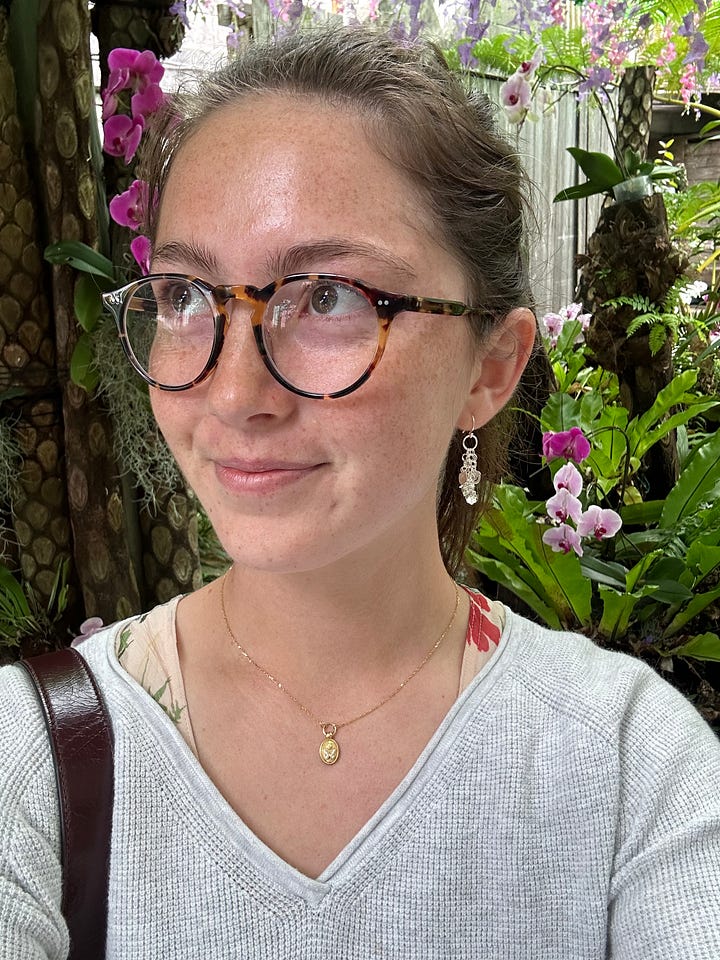
Yoshiaki Imamura
I also finally got to purchase Yoshiaki Imamura’s ceramics. I have seen his classic “espresso” cups, as well as his “doorknob” mugs, everywhere – in the chic salon next to my apartment; at the speciality coffee shops Potohoto and Rokkan; at the fancy restaurant Hohobare; at the upscale coffee-concept cocktail lounge Ryukyu Labo; at the Yanbaru Art Festival pop-up in Nanjo City, which I missed by only a day. It seems to be that seeing his cups on the shelf is a good sign that you’ve found a cool place in Okinawa.
That said, I spent months fruitlessly trying to figure out how to get one. I drove to his store to find it shuttered, DM’d his Instagram, and asked every shopkeeper who had his stuff where I could buy one, to no avail. When I went to Ryukyu Labo, I decided to try one last time before I leave Okinawa and decided to DM him again. This time he responded and said that he was going to have a pop-up sale later that month.
I knew exactly what I wanted; I love the multi-face design he does for some of his espresso cups. When I got there, I picked out this silver and gold espresso cup for myself:
His espresso cups also come with a small custom leather holder – the idea is that you can carry your cup around to different coffee shops for them to pour you espresso! I thought it was such a cute and unique idea. I also bought two more of the angular-design espresso cups as gifts for my family members.
At the check-out, you could choose from an assortment of his cups to drink freshly pressed espresso. I loved the little sugar-holder and spoon they had:
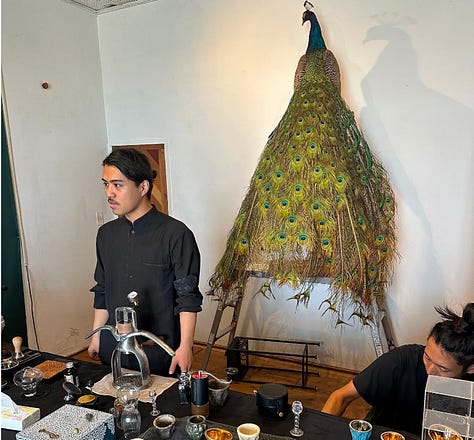

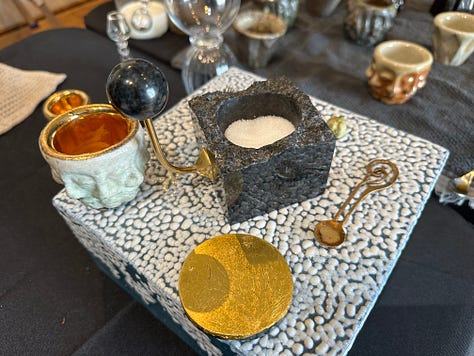
Because I bought three things, Yoshiaki then very generously asked if I wanted to see his studio. I was so excited – after spending months searching for his work, I felt like the wait was so worth it to get to see his studio.
We walked about two minutes before arriving at a nondescript door. The entrance to the space then opened up like a jewel box – the space was packed full of pottery in various stages of finish, alongside more ambitious sculptures, plants, and a collection of paraphernalia for inspiration.
When I walked in, his assistant was sitting on the floor of the studio, pouring molds for the espresso cups:
Yoshiaki’s process for making cups is threefold: first, he makes the mold. Then slip is poured into the mold, and after the cups are removed from the mold, they are then glazed and fired in the kiln.
Yoshiaki told me that he mostly gets his new ideas while sitting on the beach at night in Okinawa. Although he is from mainland Japan, he has lived in Okinawa for 20 years, since attending the Okinawa University for the Arts.
He often draws inspiration from the macabre; in his studio, he has a bust of the Roman god Mars, a deer head mount, Jesus on the crucifix, a Buddha head, a pheasant, an Aztec plaque. But while his studio has a mix of Victorian-style curiosities, taxidermies, and other oddities, it still manages to have a beautiful, lively, and alluring aesthetic.
Yoshiaki said he is also inspired by the dark spirituality present in Okinawa. Between the brutality of the war and the prevalence of spirits in Okinawan folklore, ghosts and spirits are embedded into the culture on the island.
He also draws on mainland Japanese depictions of demons, oni, which inspired this bowl:


Many of his designs also incorporate re-imaginings of the human body, like his brain statues or face cups. But although his designs often explore grotesque representations of the human body, they are never off-putting.
I absolutely love his work. The espresso cups are not only functional and accessible for the average person (and easy to scale their production if he wanted to), but they are incredibly beautiful and elegant, while still being creative and unique – touches like the leather carrying case, the faces, and gilded interior make his pieces feel inventive and luxurious. He also makes more ambitious sculptural works, like his human head pieces made of dripping glass and ceramic.
His work has been recognized by Bottega Venetta as part of their “Bottega for Bottegas” campaign. Bottega means workshop in Italian, and the brand’s campaign aims to support smaller artisans. Bottega Venetta has his cups in their Tokyo and Milan stores as gifts for customers who make particularly large purchases.
As I was about to leave, a woman and three little girls came down the stairwell; he said that it was his wife and three daughters, who are 10, 8, and 1. They were so cute! Before I left, I made sure to get a picture with him :)
I’m so happy that I got to meet him, see his studio, and get an espresso cup of my own to take home.
Stomach Flu
The day after going to Yoshiaki’s shop, I unfortunately got the stomach flu. I was super sick and had to go to the hospital to get an IV drip and medicine. It was very humbling to be so sick while also being alone in my room for days on end, trying my best to avoid dehydration while also having severe stomach pain.
Although I haven’t been that sick in a long time, there were some positives; due to my inability to leave my bed, I started watching Drive to Survive, which as I mentioned in my last newsletter was very informative in helping me prepare to attend the Suzuka F1 race. Furthermore, although it was terrible to get sick, in a way it made me feel better about getting to go home soon!
Karate Green Belt
The first day I started feeling better was Saturday, which was well-timed, because I had my karate test that day. I was so nervous that I wasn’t going to feel better, and I was sad to have missed my last two practices to prepare – I was supposed to go to four classes, two on Tuesday and two on Thursday, to prep for the exam, but I was too sick.
For my exam, I had to perform three kata – fukyu kata ichi, gekusai ichi, and gekisai ni, each more difficult than the last. Despite my sickness, luckily I passed! I’m really proud that I am able to leave Okinawa with something to show for my 6 months of training.

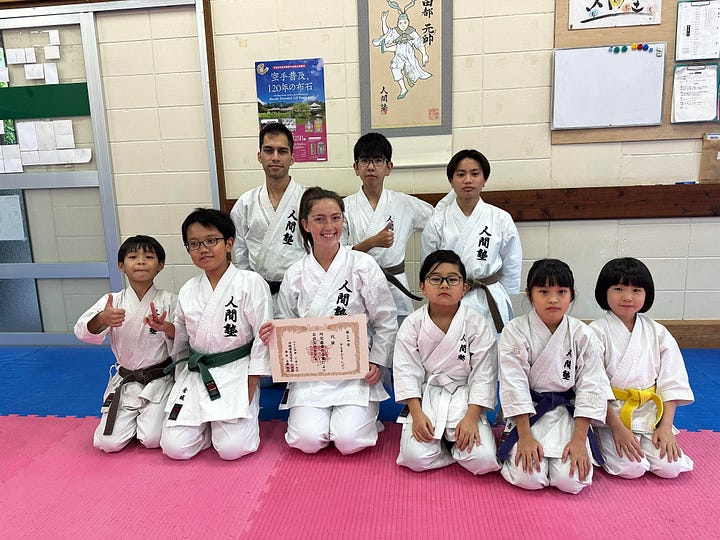
School Graduation
The following week, I graduated from my school, ICLC. We had a graduation ceremony where we received certificates of completion for our coursework.
So how good is my Japanese? I’d put my fluency level at “simple conversation with a taxi driver.” I can say where I’m from, how long I’ve been studying Japanese, and that I live in Okinawa, as well as direct the taxi left and right and understand what number the driver says when they announce the price.
It’s enough to impress a cashier – they’ll often say 日本語上手ですね! – but when eavesdropping in a restaurant, I can’t understand much more than the general subject they’re discussing. That said, considering I came here not even knowing how to say yes and no, or count 1-10, I’m pretty happy with my progress.
It’s surreal to say that I’m currently sitting at my gate in Narita airport, waiting to board my flight back to the U.S. I still have a couple things I still want to write about, so don’t be surprised if you get a couple more emails from me in the coming month or so!
Love,
Alexandra ❤️
Omoromachi, where Asato lives, is an upscale and modern neighborhood in Naha. In WWII, the area was the site of the Sugar Loaf Hill battle; following the war, the land was held by the U.S. as Camp Omoromachi, a residential area for military personnel.
After Okinawa reverted to Japan in 1972, the area was redeveloped for civilian use, and today, the area is home to the Okinawa Prefectural Museum, two malls, and Shintoshin Park.
Professor Morita was a distinguished professor of comparative literature, specializing in French and Ryukyuan studies, and later served as 14th President of the university. The University of the Ryukyus is the most prestigious university in Okinawa.





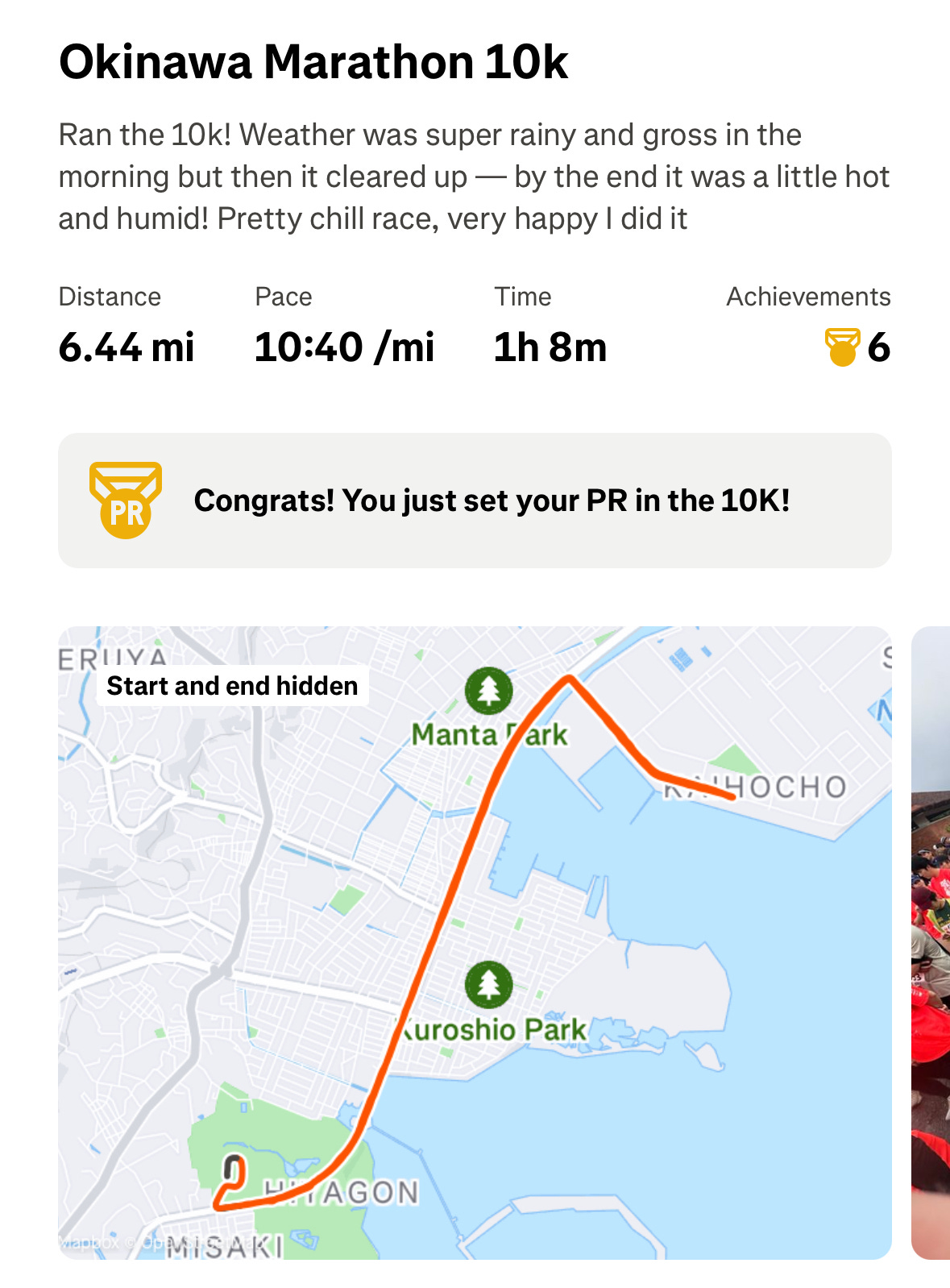

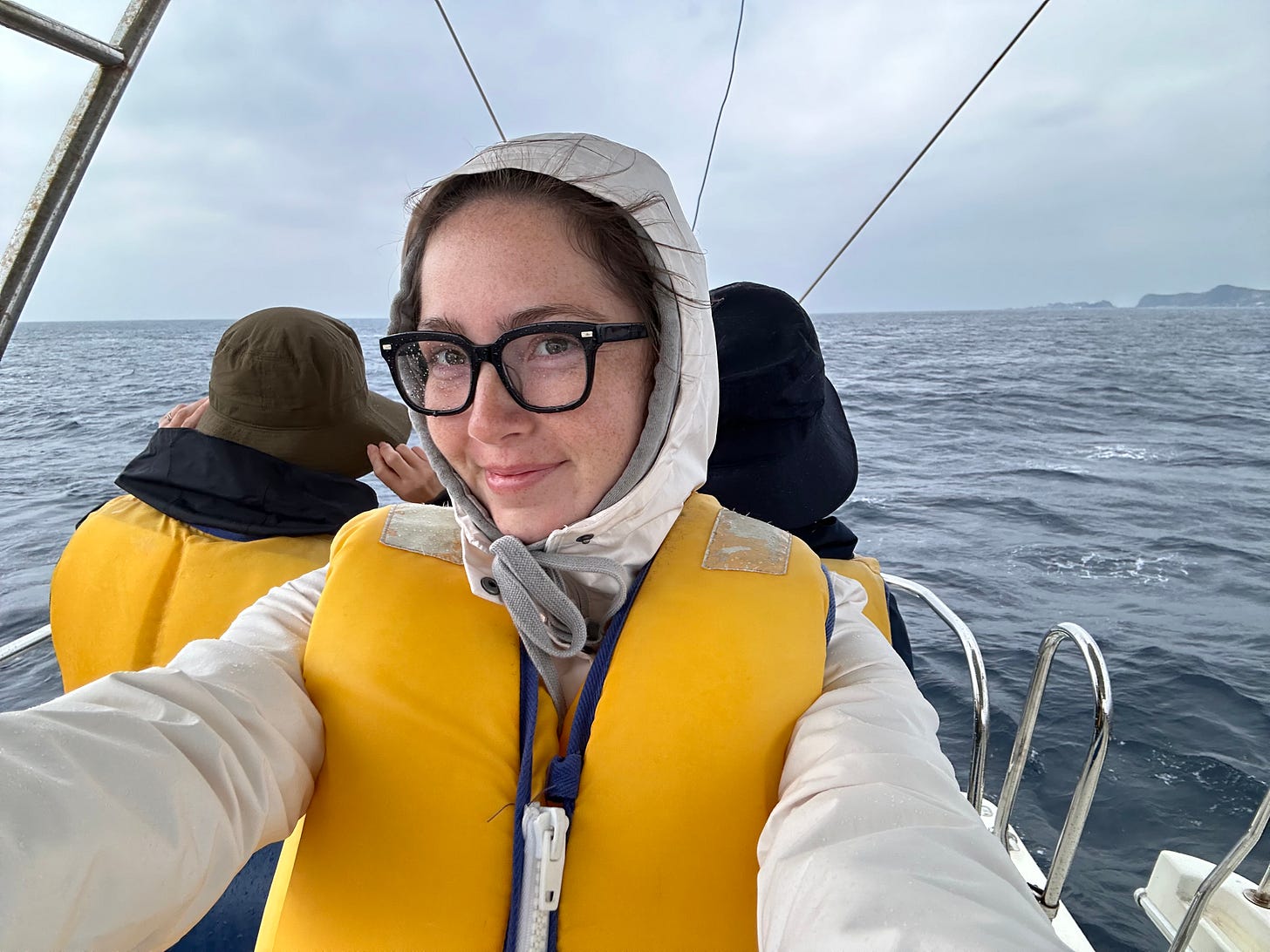


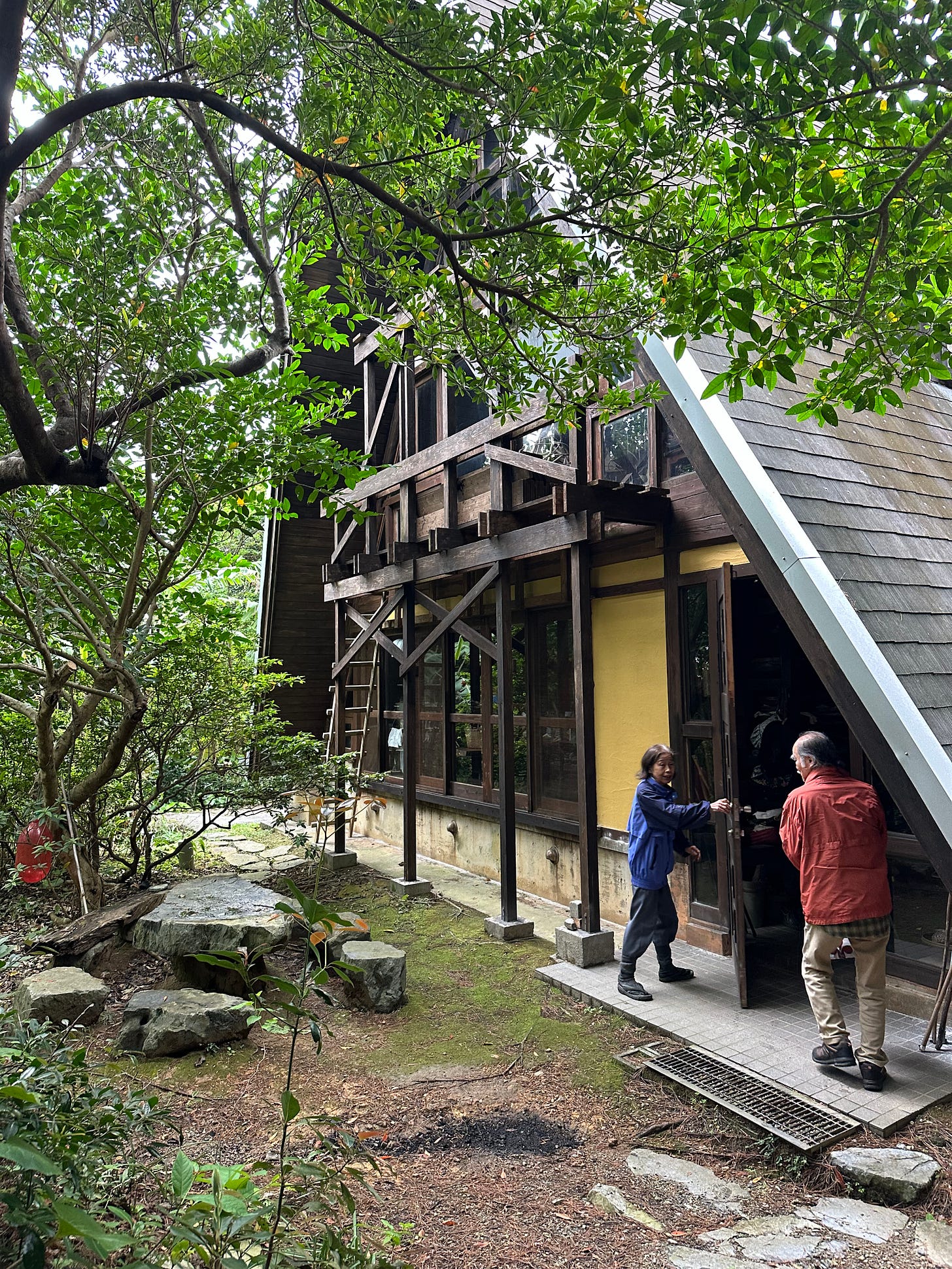

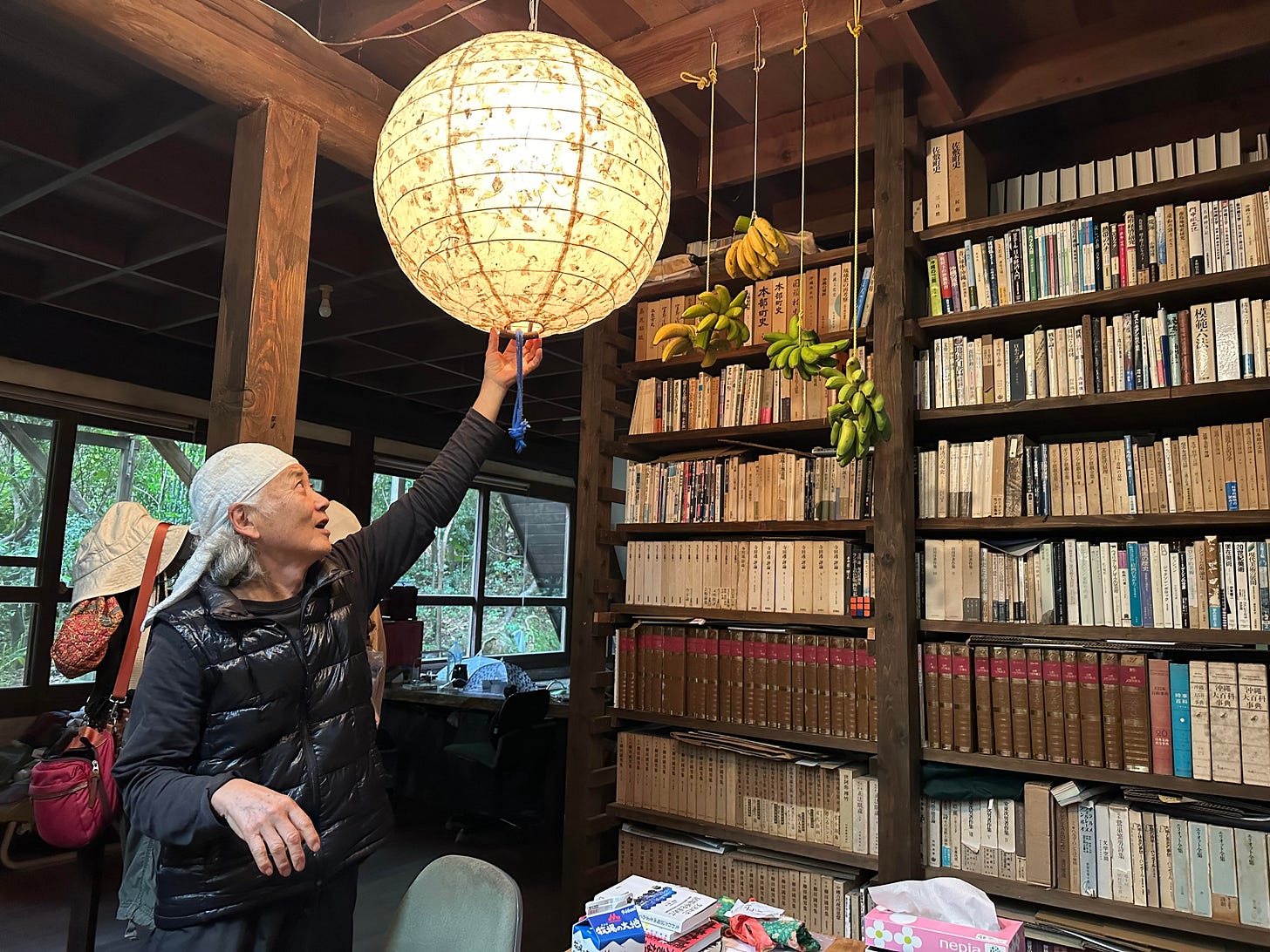
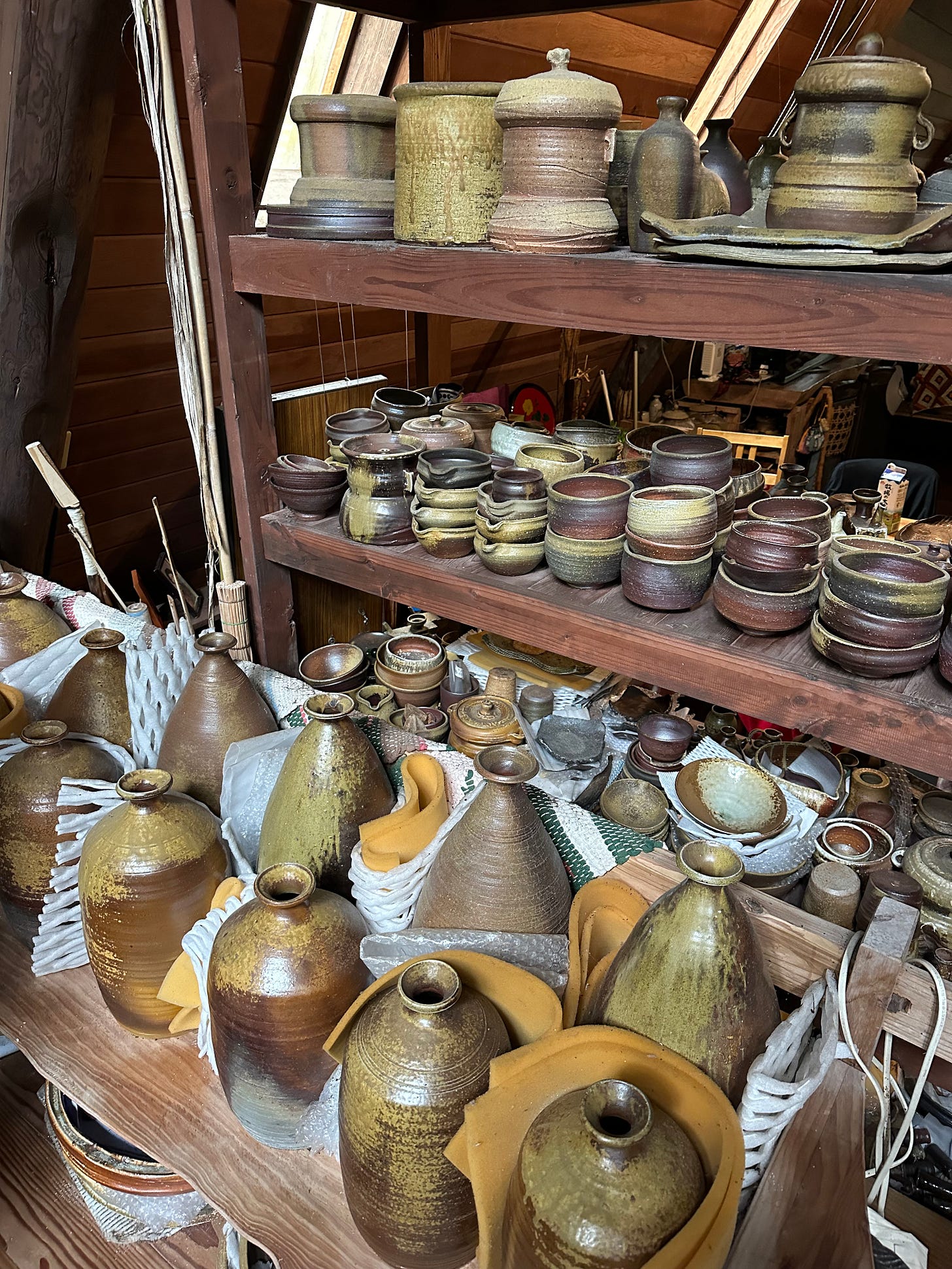
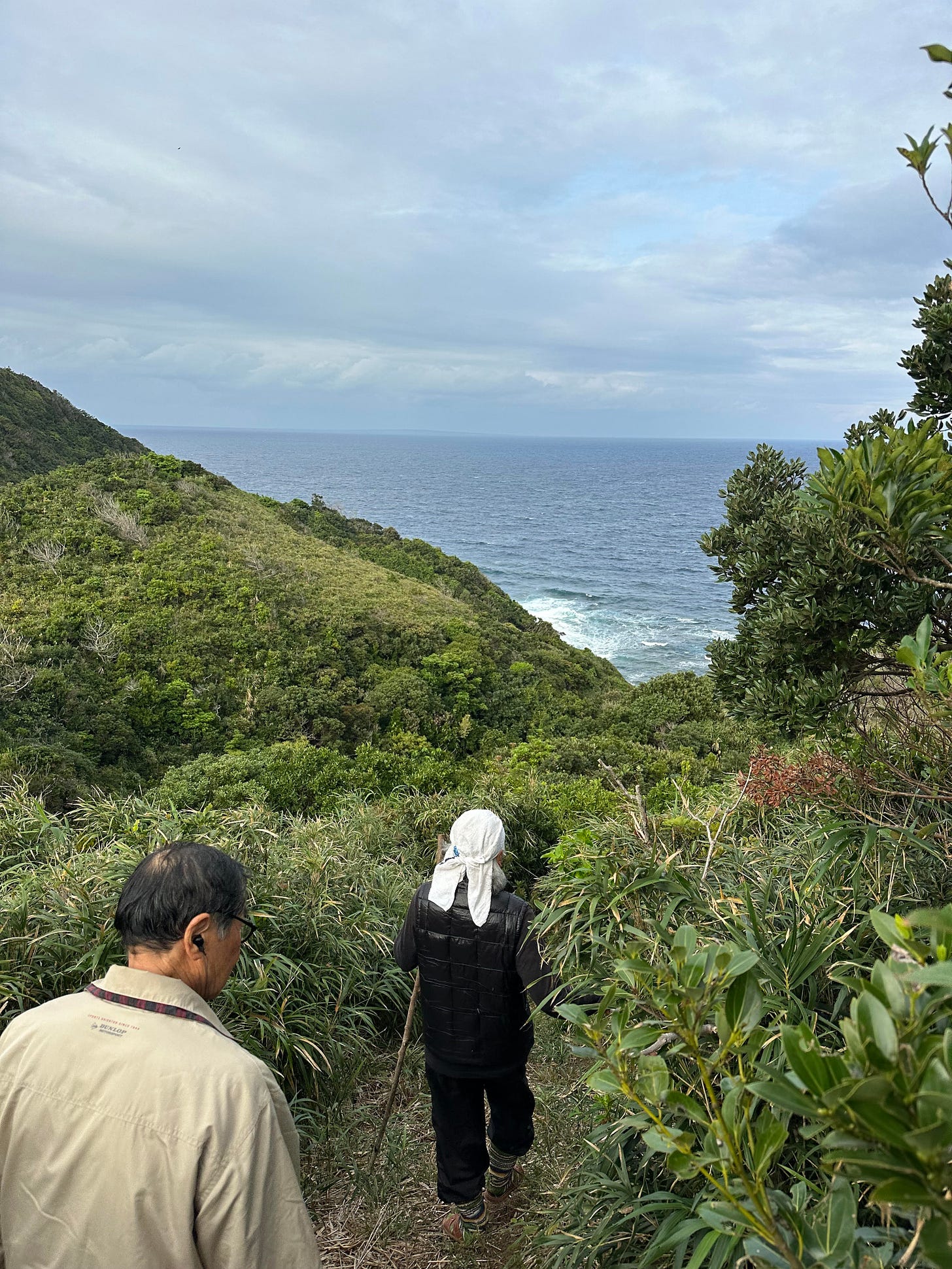


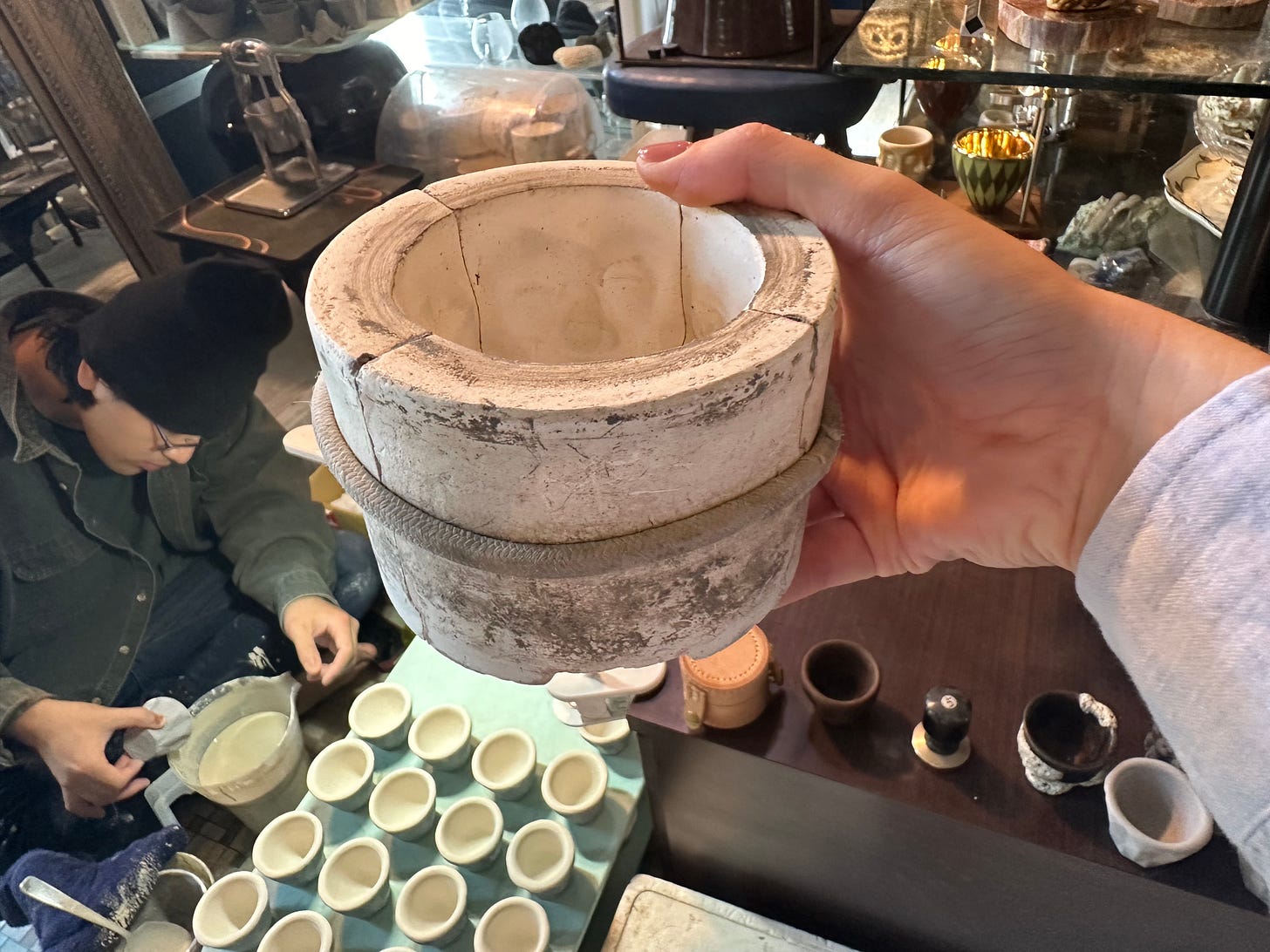

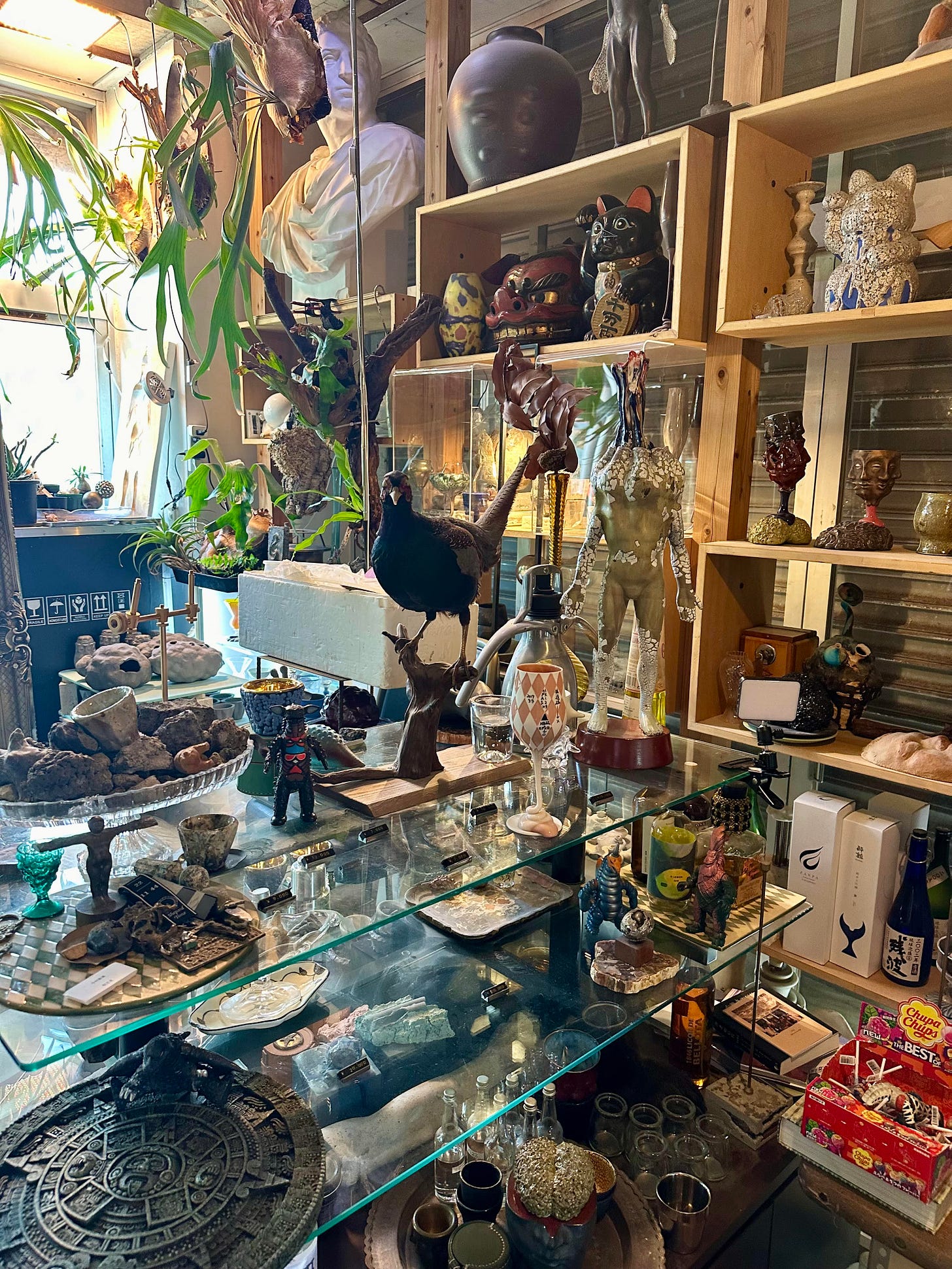

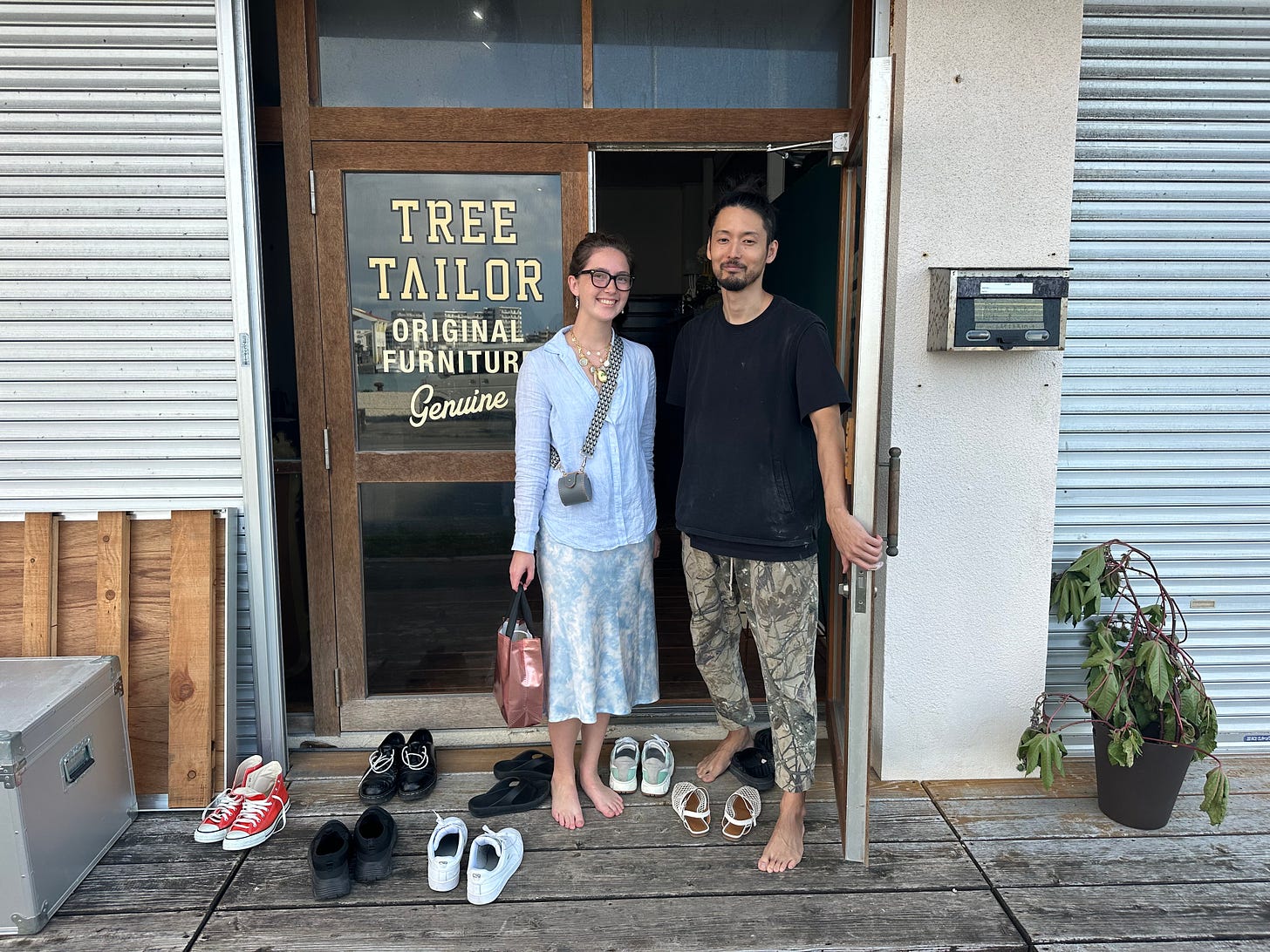

Well, Alexandra, the magical mystery tour is winding down at last. What a journey it has been, notwithstanding the stomach bug that laid you low for several days. But here you are, sporting a green belt as your sash, poised to toss other human beings around in the air as though they were hapless rag dolls.
Welcome home! You are the Wonder Woman of making the most of an opportunity you seized in the first place.